A Guide to the Best Varieties of Magnolia Trees to Plant in Your Garden
Published: November 19, 2025 at 12:36:12 AM UTC
Magnolia trees stand as living sculptures in the landscape, offering breathtaking flowers, distinctive foliage, and in many cases, captivating fragrance. These magnificent trees have been cherished in gardens for centuries, with their history stretching back to ancient China and Japan. Whether you're looking for a stately specimen tree, a compact variety for a small garden, or a flowering accent for your landscape, there's a magnolia that's perfect for your needs.

In this comprehensive guide, we'll explore the most stunning magnolia varieties, their unique characteristics, and how to select the ideal type for your garden conditions. From cold-hardy northern selections to classic southern beauties, these versatile trees offer year-round interest and timeless appeal for gardeners across the United States.
Understanding Magnolia Tree Characteristics
Before diving into specific varieties, it's helpful to understand what makes magnolias such exceptional garden trees. These ancient flowering plants belong to the family Magnoliaceae and are considered primitive angiosperms, with fossil records dating back 100 million years.
Growth Habits and Size
Magnolias display remarkable diversity in their growth habits. Some varieties form large, stately trees reaching 60-80 feet tall, while others remain compact shrubs suitable for small gardens. Their growth rate varies by species, with some growing quickly at 1-2 feet per year, while others develop more slowly but with greater longevity. Most magnolias have a naturally pleasing form requiring minimal pruning.
Bloom Times and Flower Types
One of the most enchanting aspects of magnolias is their flowering display. Depending on the variety, magnolias bloom from late winter through summer. Early-flowering types like star magnolia and saucer magnolia produce blossoms on bare branches before leaves emerge in early spring, creating a dramatic display. Later-blooming types like southern magnolia flower after leaves appear, often continuing sporadically through summer.
Magnolia flowers range from star-shaped with narrow petals to large, cup-shaped blooms up to 12 inches across. Colors include pure white, cream, pink, purple, yellow, and bicolor combinations. Many varieties offer intoxicating fragrance that perfumes the entire garden.
Hardiness and Climate Adaptability
Magnolias grow across USDA Hardiness Zones 3-10, with specific varieties adapted to different climate conditions. Some are remarkably cold-hardy, thriving in northern regions, while others require the warmth and humidity of southern states. When selecting a magnolia, matching the variety to your climate zone is essential for success.
The Best Varieties of Magnolia Trees for Your Garden
After analyzing dozens of magnolia species and cultivars, we've selected the most outstanding varieties that offer exceptional beauty, reliability, and garden performance. Each has unique characteristics that make it special for different landscape situations.
Southern Magnolia (Magnolia grandiflora)
The iconic southern magnolia is perhaps the most recognized species, with its large, glossy evergreen leaves and magnificent fragrant white flowers that can reach 8-12 inches across. These stately trees are synonymous with southern gardens but can be grown in many regions.
- Mature Size: 60-80 feet tall, 30-40 feet wide
- Growth Rate: Moderate; 1-2 feet per year
- Bloom Description: Large, creamy-white, highly fragrant flowers in summer
- Hardiness Zones: 6-10
- Growing Conditions: Full sun to part shade; moist, well-drained, acidic soil
- Special Features: Evergreen foliage, striking seed pods with red seeds
For smaller gardens, consider compact cultivars like 'Little Gem' (20-25 feet tall) or 'Teddy Bear' (15-20 feet tall), which offer the same beautiful flowers and evergreen foliage in a more manageable size.
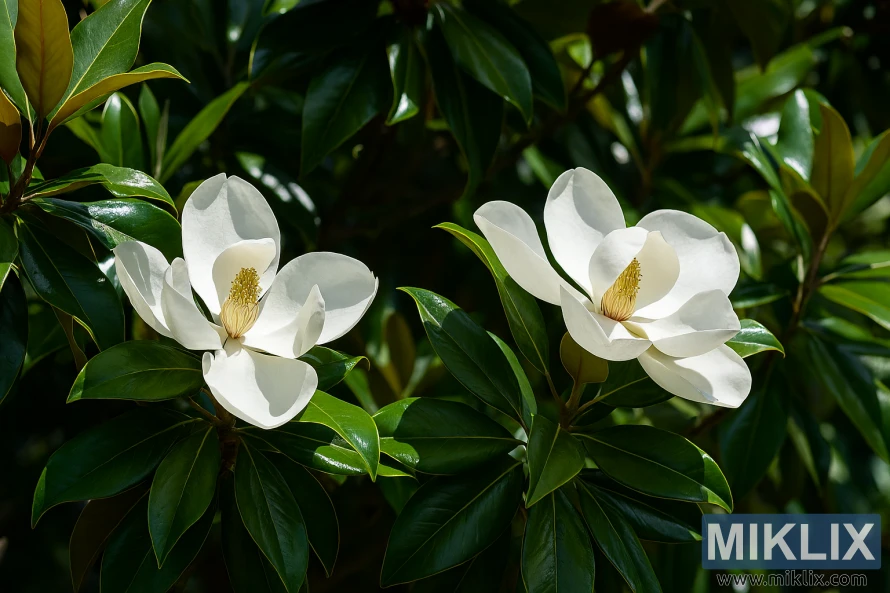
Star Magnolia (Magnolia stellata)
Star magnolia is a perfect choice for small gardens, offering profuse early spring blooms with a delicate, sweet fragrance. This compact deciduous tree or large shrub produces star-shaped flowers with numerous narrow petals before the leaves emerge, creating a stunning display against the winter landscape.
- Mature Size: 15-20 feet tall, 10-15 feet wide
- Growth Rate: Slow to moderate
- Bloom Description: Star-shaped white or pink flowers, 3-4 inches across
- Hardiness Zones: 4-9
- Growing Conditions: Full sun to part shade; moist, well-drained soil
- Special Features: Early bloomer, cold-hardy, compact size
The cultivar 'Chrysanthemumiflora' is particularly beautiful with its soft pink, multi-petaled flowers that resemble chrysanthemums. Plant star magnolias where their early flowers can be appreciated up close.

Saucer Magnolia (Magnolia × soulangeana)
The saucer magnolia is one of the most popular deciduous magnolias, creating a spectacular display in early spring with large, tulip-shaped flowers in shades of pink, purple, and white. This hybrid magnolia forms a rounded, multi-stemmed small tree that works beautifully as a focal point in garden beds or lawns.
- Mature Size: 20-25 feet tall and wide
- Growth Rate: Moderate
- Bloom Description: Large cup-shaped flowers, pink outside, white inside
- Hardiness Zones: 4-9
- Growing Conditions: Full sun to part shade; moist, well-drained soil
- Special Features: Dramatic early spring display, good for small gardens
Since saucer magnolias bloom early, late frosts can sometimes damage the flowers. Plant in a somewhat sheltered location to protect the blossoms, or consider later-blooming varieties if spring frosts are common in your area.
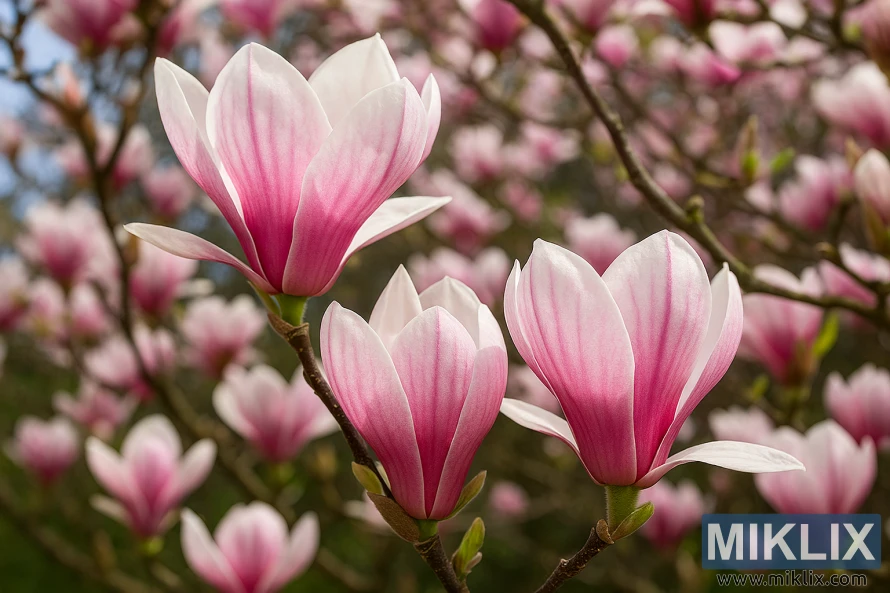
Sweetbay Magnolia (Magnolia virginiana)
Sweetbay magnolia is a versatile native tree that adapts to a wide range of conditions, including wet soils where many other trees would fail. This semi-evergreen to deciduous tree (depending on climate) produces creamy white, lemon-scented flowers throughout summer, followed by attractive red seed pods.
- Mature Size: 10-35 feet tall and wide (varies by region)
- Growth Rate: Moderate
- Bloom Description: Creamy white, lemon-scented flowers, 2-3 inches across
- Hardiness Zones: 5-10
- Growing Conditions: Full sun to part shade; tolerates wet soils
- Special Features: Tolerates wet sites, silvery leaf undersides, extended bloom period
The cultivar 'Satellite' is particularly noteworthy for its improved cold hardiness and more reliable evergreen habit in colder zones. Sweetbay magnolia works beautifully in rain gardens or low spots where drainage is poor.
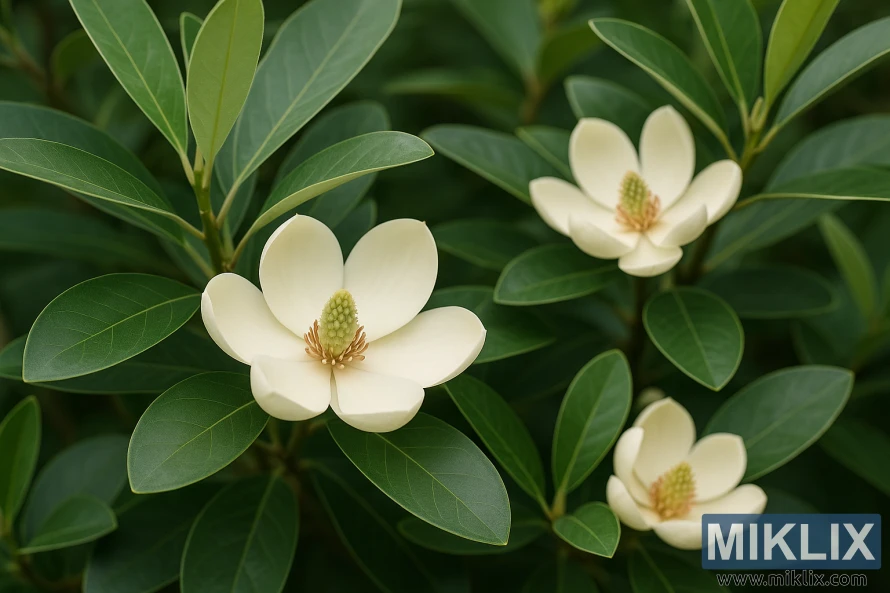
Cucumber Magnolia (Magnolia acuminata)
The cucumber magnolia is the most cold-hardy of all magnolias, making it an excellent choice for northern gardens. This impressive native tree gets its name from the cucumber-shaped fruit that follows its yellowish-green flowers. While the blooms are less showy than other magnolias, this species makes an excellent shade tree with a handsome pyramidal form.
- Mature Size: 60-80 feet tall, 30-40 feet wide
- Growth Rate: Moderate to fast
- Bloom Description: Yellowish-green tulip-shaped flowers, 2-3 inches long
- Hardiness Zones: 3-8
- Growing Conditions: Full sun to part shade; moist, well-drained soil
- Special Features: Extreme cold hardiness, attractive pyramidal form
Several yellow-flowering hybrids have been developed using cucumber magnolia as a parent, including 'Butterflies', 'Yellow Bird', and 'Gold Star', which combine cold hardiness with more vibrant flowers.
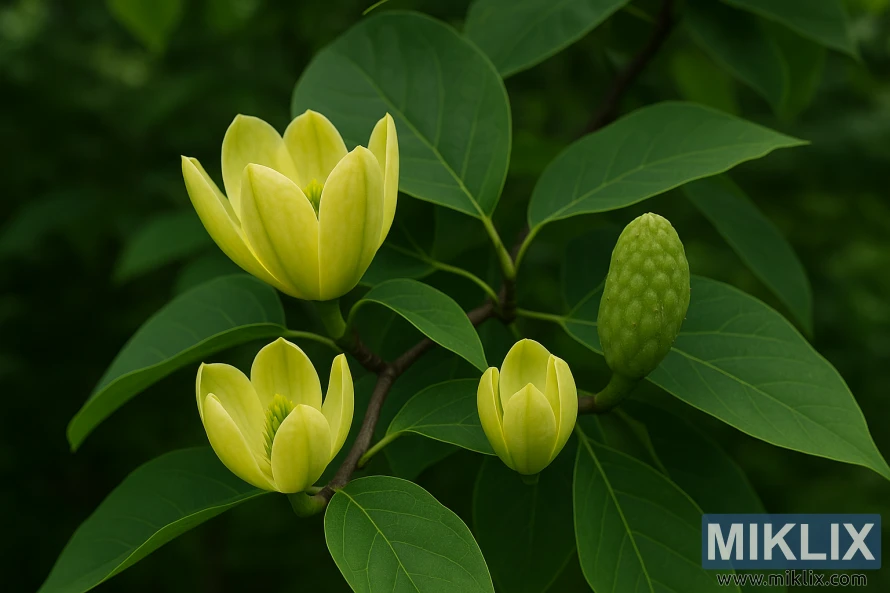
Loebner Magnolia (Magnolia × loebneri)
Loebner magnolia combines the best qualities of its parent plants—star magnolia and Kobus magnolia—creating a small tree with abundant, fragrant flowers. This hybrid produces star-shaped blooms that are larger than those of star magnolia but with the same delicate, multi-petaled appearance.
- Mature Size: 20-30 feet tall and wide
- Growth Rate: Moderate
- Bloom Description: Star-shaped white to pink flowers, 4-6 inches across
- Hardiness Zones: 5-9
- Growing Conditions: Full sun to part shade; moist, well-drained soil
- Special Features: Profuse flowering, good cold hardiness, disease resistance
Popular cultivars include 'Merrill', with pure white flowers and exceptional fragrance, and 'Leonard Messel', which produces pink flowers with white interiors. These trees bloom slightly later than star magnolia, often avoiding damage from late spring frosts.

Planting and Care Tips for Magnolia Trees
Selecting the Right Location
Magnolias develop extensive root systems and generally dislike being transplanted once established. Take time to select the perfect location from the start:
- Choose a spot with full sun to light shade. Most magnolias bloom best with at least 6 hours of direct sunlight.
- Ensure adequate space for the mature size of your chosen variety.
- Protect early-flowering varieties from locations with cold, drying winds that can damage blooms.
- Consider the backdrop—dark evergreens make white magnolia flowers stand out dramatically.
- Plant where fallen flowers and leaves won't create maintenance issues, such as away from pools or patios.
Soil Preparation and Planting
Magnolias prefer slightly acidic, well-drained soil rich in organic matter. Follow these steps for successful planting:
- Test soil pH—aim for 5.5-6.5 for best results.
- Amend heavy clay soils with compost to improve drainage.
- Dig a hole twice as wide as the root ball but no deeper.
- Position the tree so the top of the root ball is slightly above ground level.
- Backfill with native soil mixed with compost.
- Water thoroughly and apply 2-3 inches of mulch, keeping it away from the trunk.
Watering and Fertilizing
Proper moisture and nutrition are key to magnolia health:
- Water deeply once a week during the first growing season.
- Once established, water during extended dry periods.
- Apply a slow-release fertilizer formulated for acid-loving plants in early spring.
- Avoid high-nitrogen fertilizers that can promote foliage at the expense of flowers.
- Mulch annually with compost or leaf mold to provide nutrients and maintain soil moisture.
Pruning and Maintenance
Magnolias naturally develop an attractive form and require minimal pruning:
- Limit pruning to removal of dead, damaged, or crossing branches.
- Prune deciduous magnolias immediately after flowering.
- Prune evergreen magnolias in late spring after new growth begins.
- Remove suckers that emerge from the base of grafted varieties.
- Consider applying horticultural oil in winter to control magnolia scale if present.
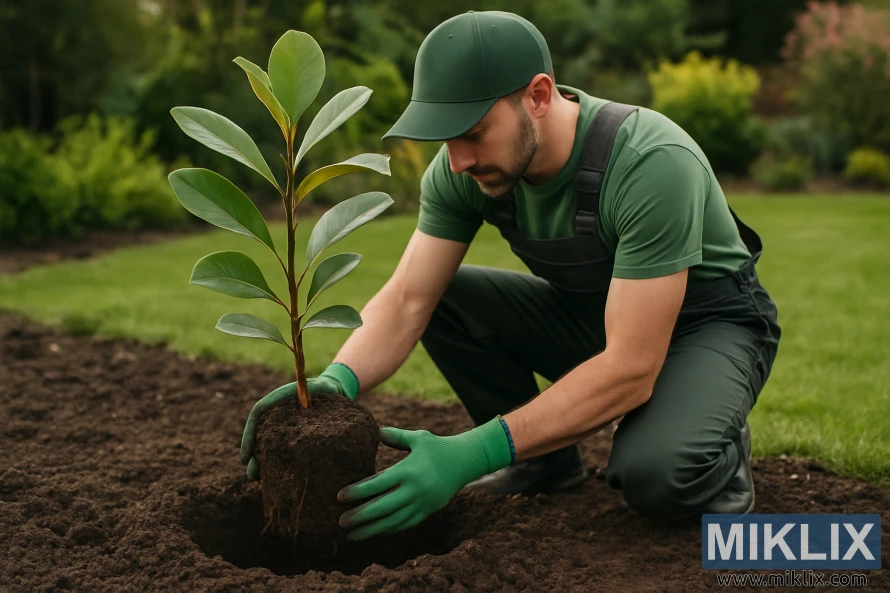
Design Suggestions for Magnolias in the Landscape
Magnolias as Specimen Trees
The magnificent form and flowering display of magnolias make them ideal specimen or focal point trees:
- Plant a single southern magnolia as a majestic focal point in a large lawn.
- Use a star or saucer magnolia as a specimen in a front yard where its spring display can be appreciated.
- Position sweetbay magnolia where afternoon sun will backlight its leaves, highlighting their silvery undersides.
- Place early-flowering varieties where they can be viewed from inside the home during late winter.
Magnolias in Mixed Borders
Smaller magnolias work beautifully in mixed shrub and perennial borders:
- Combine star magnolia with early spring bulbs like daffodils and grape hyacinths.
- Plant lily magnolia with shade-tolerant perennials like hostas and ferns.
- Use sweetbay magnolia in rain gardens with other moisture-loving plants.
- Pair deciduous magnolias with evergreens to provide year-round structure.
Magnolias for Small Gardens
Even small gardens can enjoy magnolias with these space-saving ideas:
- Choose compact varieties like 'Little Gem' southern magnolia or star magnolia.
- Train sweetbay magnolia as a multi-stemmed shrub rather than a single-trunk tree.
- Consider columnar varieties that grow more up than out.
- Plant magnolias in large containers on patios or terraces (best for smaller varieties).
Seasonal Combinations
Enhance the seasonal interest of magnolias with thoughtful companion plantings:
- Underplant evergreen magnolias with shade-loving perennials like hellebores for winter interest.
- Combine early-flowering magnolias with later-blooming trees and shrubs for extended seasonal display.
- Plant bulbs beneath deciduous magnolias to take advantage of spring sunlight before leaves emerge.
- Use ornamental grasses to complement the structural form of magnolias in fall and winter.
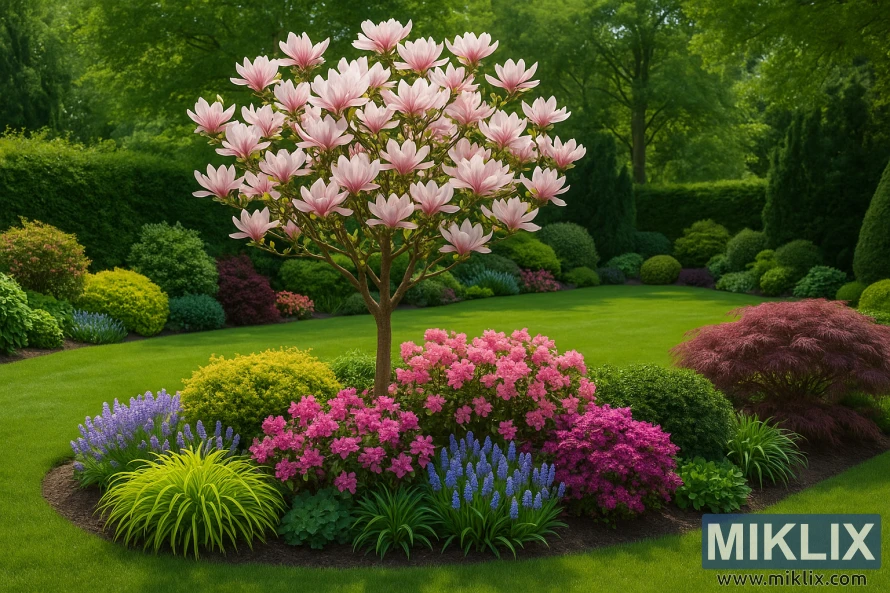
Selecting the Perfect Magnolia for Your Garden
Choosing the right magnolia variety depends on several key factors specific to your garden and preferences:
Consider Your Climate
Match the magnolia variety to your hardiness zone. For colder regions (Zones 3-5), focus on hardy varieties like cucumber magnolia, star magnolia, and certain hybrids. For warmer areas (Zones 7-10), the classic southern magnolia and its cultivars thrive beautifully.
Evaluate Your Space
Be realistic about the space available. Large gardens can accommodate the majestic southern or cucumber magnolias, while smaller landscapes are better suited to compact varieties like star magnolia, 'Little Gem', or 'Teddy Bear'.
Consider Bloom Time
If late spring frosts are common in your area, choose later-blooming varieties to avoid flower damage. If you want to extend the flowering season, plant several different magnolia types with sequential bloom times.
Decide on Evergreen vs. Deciduous
Evergreen magnolias provide year-round structure and privacy but require more space. Deciduous varieties offer spectacular spring flowering displays and often work better in smaller gardens or colder climates.
With their timeless beauty and remarkable diversity, magnolias offer something for nearly every garden situation. By selecting the right variety for your specific conditions and providing proper care, you'll enjoy these magnificent trees for generations to come. Their stunning flowers, attractive foliage, and elegant form make magnolias truly special additions to any landscape.
Further Reading
If you enjoyed this post, you may also like these suggestions:
- A Guide to the Best Trees to Plant in Your Garden
- The Best Crabapple Tree Varieties to Plant in Your Garden
- The Best Maple Trees to Plant in Your Garden: A Guide to Species Selection
